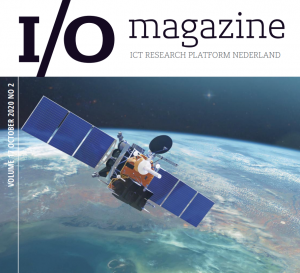IMPROVED TWIN SYSTEM GENERATES OPPORTUNITIES (by Rianne Lindhout - IO magazine)

 The InternetofThings is about far more than just smart coffee machines or thermostats. Networks of sensors, for example, are vital for enabling so-called digital twins to simulate the real world far more accurately. What are these rapidly emerging digital twins and which scientific questions do they elicit?
The InternetofThings is about far more than just smart coffee machines or thermostats. Networks of sensors, for example, are vital for enabling so-called digital twins to simulate the real world far more accurately. What are these rapidly emerging digital twins and which scientific questions do they elicit?
For a long time, industry has used digital models to predict how to best adjust the parameters in a complex system. These models are called digital twins. ‘Such a model can assume a wide range of forms, varying from a 3D drawing to a mathematical model,’ explains Bayu Jayawardhana, Professor of Mechatronics and Control of Nonlinear Systems at the University
of Groningen. ‘Digital twin is an umbrella term for many different things. However, these all work based on static knowledge such as natural laws, chemistry and thermo dynamics. They also assume ideal conditions and normal behaviour, whereas the reality is often different.’ Jayawardhana leads the Perspectief programme DIGITAL TWIN (Integration of Data-drIven and model-based enGIneering in fuTure industriAL Technology With value chaIn optimizatioN). Within this programme, six universities, eleven companies and TNO are integrating various forms of models to ensure that they are able to learn from data. Through this approach, digital twins will be able to descrive the reality even better still.
For the whole article please follow this link: I/O Magazine OCTOBER 2020
More information about the DIGITAL TWIN programme: Youtube promotional video